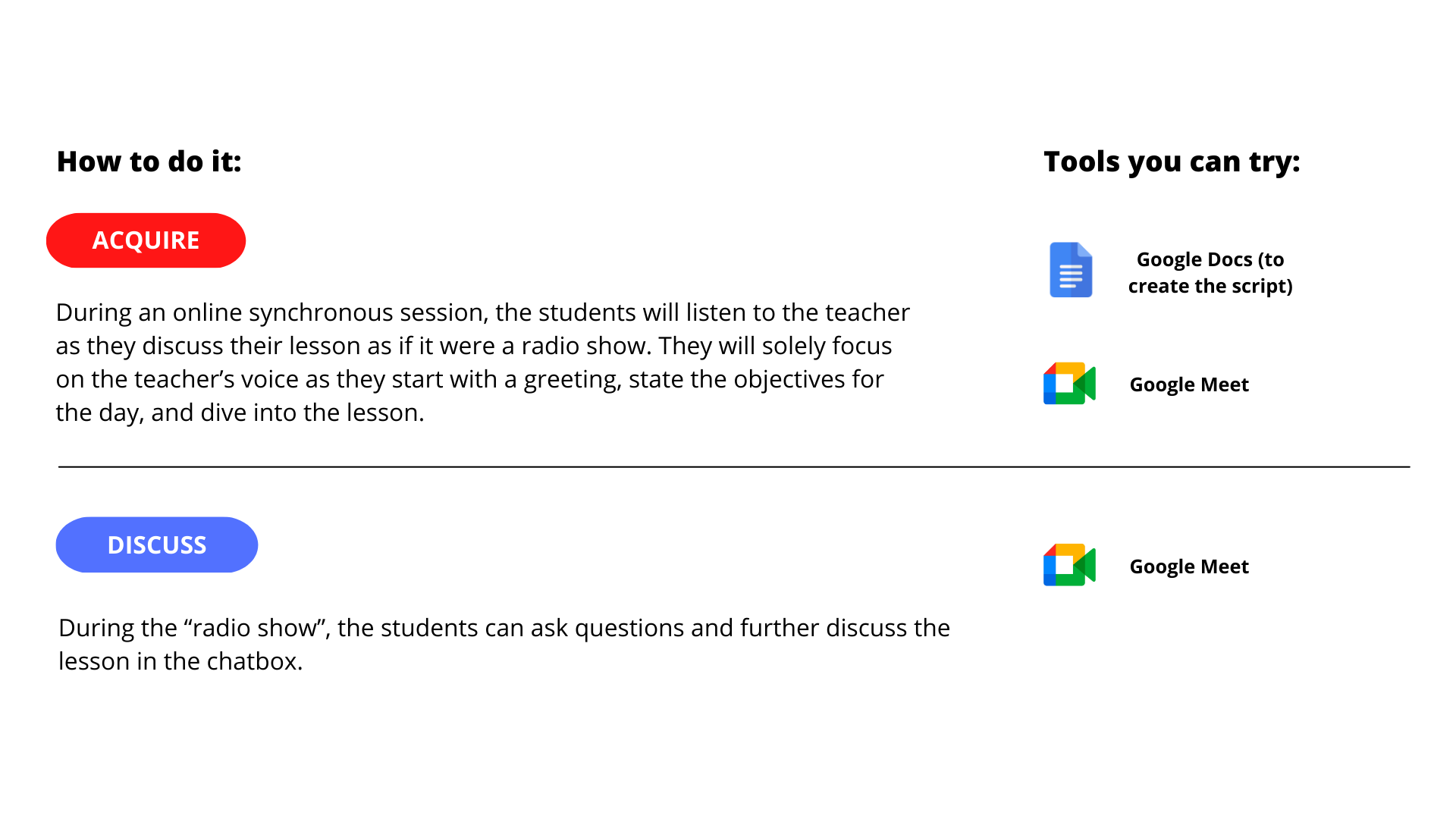Spice up your online classes with a pre-made script meant to feel like a radio show or live podcast!
Details
Professor: Dr. Philip Paje
Subject: Asia Pacific Studies
Intended Learning Outcome: Conduct the class as if it were a radio show.

Feedback and Comments
- This design pattern is best done online. Dr. Paje recommends that the radio show portion is a maximum of 30 minutes, while the rest of the class will be dedicated to asynchronous work.
- This is also easier to do online so that the professor can read the script they prepared.
- This also works best for classes that do not require cameras to be switched on.
- Students are allowed to interrupt the professor as they go through the script. They can ask questions, etc.
- Dr. Paje suggests that you read the script as if you’re performing – voice should be modulated and dynamic, not monotonous. This helps him keep his students’ interests, even during online classes.
Notes from Dr. Paje:
- Dr. Paje started this design pattern during the lockdown, when classes had to be held fully online. He wanted to cater to those students with bandwidth and connection issues. His plan was to make the students solely focus on his voice.
- He creates powerpoint slides with a corresponding script beforehand which he performs aloud. This script includes the greeting which he uses to check attendance (e.g., he’ll greet every student by name to which the student responds by recalling an idea from the previous session and putting it in the chatbox which also serves as the possible talking points that bridge the next topic, in the chatbox for attendance), the objectives for the day, and the lesson itself. He also includes healthy jokes in his script and appropriate cues when to ask what during the synchronous sessions. He also makes sure to include who he will call for recitation.
Student Feedback:
“I personally liked how our synchronous sessions are very short (30 minutes) and that we don’t have to “speak”, instead we participate in the chat box. This is good as it makes me feel less anxious about participating, instead it actually makes me more engaged.”
“A relevant strategy that helped me learn more was how the professor held one synchronous session every week. I also enjoyed the way that the instructor made the lectures fun and engaging because he asked questions and prepared a well-made presentation. It was my first time using Canvas conference, and it always lagged or bugged out, but I still enjoyed [the class].”
“[Because the synchronous sessions were shorter], we were able to pay attention more and not feel as burnt out during and after the session. Participation via chat is also good as it could reduce the anxiousness of the students who want to recite but can’t.”
U.N.I.T.A.S. Design Principles demonstrated in this design pattern
| Understands the learner | The teacher takes into consideration the different Internet accessibilities of the students. |
| Nurtures student well-being | This design pattern promotes engagement among the students. |
| Inspires curiosity and self-development | This design considers the auditory skills development of the student. |
| Thoughtfully done | The script has to be well made in order for it to be rich and concise. |
| Achieves learning goals | It’s a different and fun way to get the lesson across. |
| Systematically reviews and improves the learning experience | The teacher considers every detail before delivering the content. |